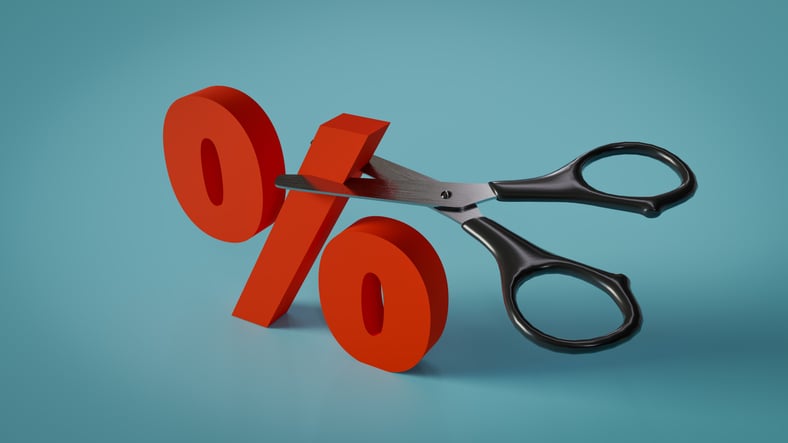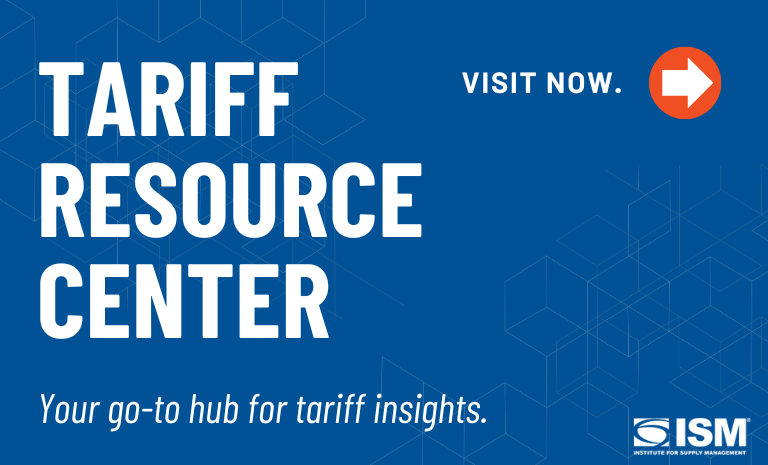Impact Of Interest-Rate Cut Could Be Minimal Amid Current Chaos

If the interest-rate cut approved last week by the U.S. Federal Reserve (Fed) was a joyful noise for many companies and supply management organizations, it was barely audible amid the thunderous cacophony of tariffs turbulence, rising inflation and a cooling job market.
There’s simply too much uncertainty, says John Lash, group vice president of product strategy at e2open, an Addison, Texas-based global supply chain platform. And if the quarter-point rate reduction (with two more cuts expected by the end of the year) fails to ease pressure on prices and employment, that uncertainty could lead to inaction, stalling economic growth.
“When companies are faced with tariffs of up to 50 percent that are increasing their costs, you’ve got to cut somewhere else in the business,” Lash says. “It goes back to the uncertainty. Many companies don’t know what next month looks like, let alone next year. And you need certainty before you hire people and before you invest. Right now, a lot of things are on hold because everything is risky.”
When federal monetary policy is loosened, companies usually benefit in four ways: (1) consumer spending is stimulated, (2) the rise in demand leads to more business for carriers, (3) business investment is encouraged and (4) inventory management is cheaper. However, those scenarios typically apply to normal economic conditions.
These are not normal times. The Trump administration’s protectionist trade policy has led to tariffs — some on, then off, then on again — and supply chain chaos that equals or exceeds that of the Great Recession or coronavirus pandemic, according to some of the Institute for Supply Management® (ISM®) Business Survey Committee panelists that provide data for the monthly ISM® PMI® Reports.
The end of the de minimis tariffs exemption on shipments of under US$800 is expected to hamper smaller businesses and could further sour consumer demand that has long been sluggish. And the Fed faces a difficult balancing act, with inflation and employment metrics trending in opposite directions.
“All of these things — inflation, de minimis, a softening labor market — are going to combine together,” Lash says. “And it looks like tariffs are here to stay. Energy costs are going up, so there are other inflationary factors. So, the Fed has a lot to deal with.”
And so do companies, which means lower borrowing costs are no guarantee that they will charge into hiring and investment.
A Dual Mandate Tug-of-War
The Fed, it’s often said, has a dual mandate: achieve maximum employment and price stability. Recent economic data indicate the “Fed is in a pickle,” Comerica Bank economists Bill Adams and Waran Bhahirethan wrote in a memo to clients and investors.
They continued, “(Inflation is) pulling them one way and a softening job market pulling the other. Ordinarily, the Fed reins in plans to cut rates when the economy looks like it will run hotter than (the board members) have been expecting, especially if inflation is above their target and rising like it is today. They are doing the opposite now because recent jobs data show the labor market has weakened considerably in 2025.”
The U.S. Bureau of Labor Statistics (BLS) indicated that the U.S. added just 22,000 jobs in August, down from 158,000 in April, with the unemployment rate rising to 4.3 percent. What’s more, revised data showed that the economy added 911,000 fewer jobs over the 12 months ending in March than previously estimated.
The consumer price index (CPI) of goods and services revealed that the annual inflation rate was 2.9 percent in August, an increase from 2.3 percent in April. Core CPI, which excludes energy and food prices, was up 3.1 percent year-over-year in July and August, compared with 2.8 percent from March through May.
The impact of a rate cut will be minimal if companies (1) are hesitant to increase head counts and (2) can no longer hold off on passing tariff costs on to customers, Lash says.
“With inflation going up. I’m concerned that there may be more layoffs,” he says. “Labor is a controllable expense, and companies are trying to balance their books. It looks like inflation will be above 2 percent for the foreseeable future, and employment is likely to worsen. I don’t have a crystal ball, but the fundamentals don’t look good.”
Another sobering data point, Lash says: Half (49.2 percent) of total U.S. consumer spending in the second quarter was by those in the top 10 percent of income distribution. That’s the highest share since at least 1989 but not far out of line with the last 15 years, when that figure has consistently been above 43 percent. Still, it indicates that a growing share of the population is belt tightening, a bad sign for demand that has been tepid for years.
“The economy and GDP (gross domestic product) don’t care where spending comes from,” Lash says. “But if that 10 percent gets spooked, you lose a ton of spending very quickly. And that’s got to be super scary.”
How Supply Chains Can Respond
The current trade environment is unprecedented, Lash notes. According to The Budget Lab at Yale University in New Haven, Connecticut, the current overall average effective tariff rate of 17.4 percent is the highest since 1935.
“Even during the pandemic, we knew things would eventually get back to normal,” Lash says. “That was a natural disaster. But this is a policy choice that is rewiring things. We’re still figuring out the dynamics and the consequences of how things are all connected and what are the flows coming in and out of the country? What are the relationships and trade patterns with the U.S. and other nations, and how does it all impact the economy?”
Long-term strategy planning can be in limbo during such a time of uncertainty, he says, so it’s critical for companies and supply management organizations to be prepared and agile to move quickly for short-term opportunities.
Visibility is also critical, because trade policy has shifted within weeks or even days under the Trump administration, so windows of opportunity might nor stay open long, Lash says: “By the time you make a decision to move forward, the moment may have passed.”
He continues, “Stay connected to all the tariff changes. Get plugged in and make sure have current information on that and that you can connect that back to your supply chain. The short-term decisions and the visibility and velocity to confidently make that decision and move before your competitors will allow you to capture little upsides. And when there are downsides, protect yourself against them.”

